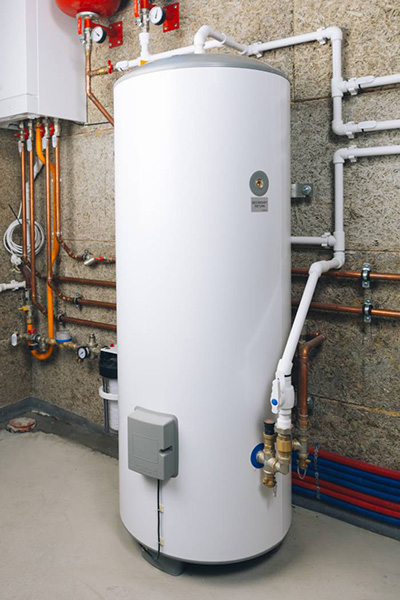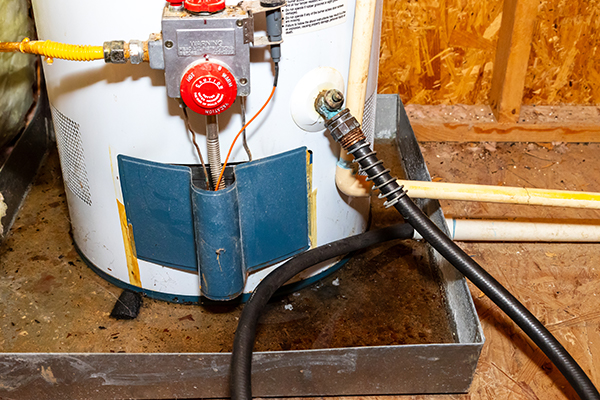Troubleshooting Blinking Lights on Your Water Heater
Water heaters are an essential part of our daily lives, as they provide hot water for showering, cooking, and cleaning. It is important to understand the blinking lights on the water heater to ensure its proper functioning and identify any issues before they cause serious damage. These lights serve as a warning signal, indicating that the system may need attention or maintenance. A deeper understanding of these warning signals can help you avoid costly repairs and replacements and prevent water damage to your home. Here are the top three reasons why your water heater has blinking lights.
Error Codes
Like any other electronic device, water heaters can face technical issues requiring immediate attention to protect them from significant damage. Hence, it’s essential to have an error code system that signals any malfunctions in a timely manner. These blinking light patterns can vary depending on the manufacturer and model of the appliance, but the most common ones include the following.
1. No Power Supply
This error code signals that the water heater receives no power input. A lack of power can result from a tripped circuit breaker, loose wiring, or faulty electrical components.
2. Thermocouple Issues
The thermocouple is responsible for sensing the pilot light. If the pilot light fails, it results in a lack of hot water, so you want the sensor to continue to alert you when the pilot light goes out. If there is a problem with this sensor, the blinking lights will signal an issue, so you can get the sensor repaired.
3. Temperature Sensor Failure
The temperature sensor is responsible for regulating the water temperature. The water can either become too hot or cold when malfunctioning, leading to a safety hazard. Blinking lights will flash in response to the failure of the temperature sensor.

4. Gas Valve Malfunction
Error code signals that there may be an issue with the water heater’s gas valve. Low pressure, a damaged thermocouple, or faulty wiring can cause this issue. In such cases, it is important to have a qualified HVAC technician inspect and troubleshoot the system.
5. Flue Blockages
Blockages in the flue or vent system hinder proper fume discharge. This will lead to an accumulation of toxic gas within the house. A series of blinking lights will alert you if a blockage is present, so you can call for help and remediate the problem.
Temperature Setting Indicators
Usually color-coded or designated with specific blink patterns, these lights can help you determine if their water heater is operating within the desired temperature range. Most commonly, these lights indicate if the heater is in standby mode, in normal operation mode, or if there is a problem with the equipment that requires attention. Depending on the model of the water heater, these blinking lights may include additional features such as low-water shutoff protection, anti-scald protection, and energy-saving modes.
Apart from convenience and ease of use, blinking indicators on water heaters also provide an added measure of safety. As the temperature settings on water heaters can be dangerous if set too high, these indicators can help safeguard against accidental burns and scalds. By providing effortless visual cues, the blinking lights can also help prevent users from unnecessarily fiddling with temperature settings. Some water heaters now feature Wi-Fi connectivity and apps that enable you to check and control the temperature settings remotely. These upgraded models may also have blinking lights indicating when there is an internet connection with the equipment and operation in a “smart” mode.
Maintenance Reminders
It’s easy to forget the regular maintenance that our household appliances require to function efficiently. The blinking lights on your water heater serve as an indicator to combat this problem. These lights provide a visual reminder for you to schedule regular maintenance appointments with service technicians. This way, you can ensure that your water heater works properly, and you can avoid costly repairs.

Sediment buildup can accumulate in the tank, leading to decreased efficiency and potential leaks. A blinking light can signal the need for flushing or cleaning the tank to remove buildup. Additionally, the anode rod within the tank may need replacement every few years to prevent rust and corrosion. This light can indicate that it is time to replace or inspect the anode rod.
BELOMAN in Belleville has been a leader in the HVAC industry for over 60 years, and our expertise allows us to provide top-notch service to you. Along with our installation and repair services, we offer maintenance packages to ensure that your HVAC systems run efficiently. We also provide plumbing services, such as water heater installation and repair, and electrical services, including electrical panel upgrades. Contact BELOMAN today for more information.







